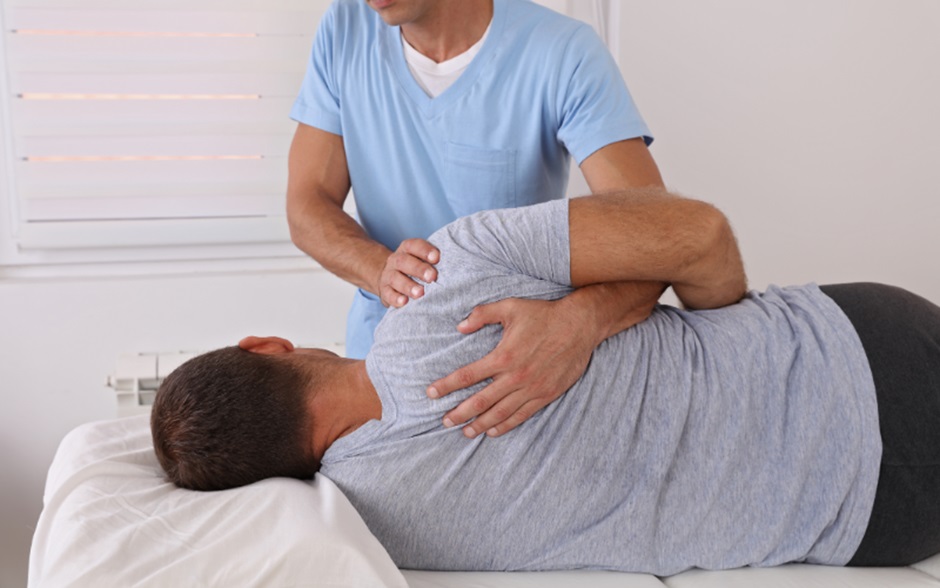
Shoulder pain is a prevalent concern that can affect one’s everyday activities. Among the many conditions that lead to shoulder discomfort, a frozen shoulder is particularly noted for its features and treatment methods. Recognising the distinctions between frozen shoulder symptoms and other shoulder ailments is then essential for proper diagnosis and treatment.
Discover the primary differences between frozen shoulder and other shoulder conditions and learn their corresponding treatment options.
What is a Frozen Shoulder?
Frozen shoulder, medically known as adhesive capsulitis, is characterised by stiffness and pain in the shoulder joint. It typically develops slowly and worsens over time. The exact cause is often unknown, but it is associated with inflammation, thickening, and tightening of the joint capsule surrounding the shoulder. This condition is common in people aged 40 to 60, particularly in women.
Key Symptoms:
- Gradual onset of shoulder pain and stiffness.
- Limited range of motion.
- Pain worsens at night or with movement.
Phases of Frozen Shoulder:
Freezing Stage: Pain gradually increases, and shoulder movement becomes restricted.
Frozen Stage: Pain may reduce, but stiffness remains, severely limiting shoulder movement.
Thawing Stage: Gradual improvement in shoulder movement and a decrease in stiffness.
Other Common Shoulder Conditions
Although many know what a frozen shoulder is, some patients still confuse it with several shoulder conditions due to overlapping symptoms. However, each has distinct characteristics that require different treatments.

Rotator Cuff Tendinitis:
- Symptoms: Shoulder pain, particularly when lifting the arm, and weakness in the shoulder.
- Cause: Inflammation of the tendons in the rotator cuff, often due to repetitive motion or injury.
- Treatment: Rest, anti-inflammatory medications, physical therapy, and, in some cases, corticosteroid injections or surgery.
Shoulder Impingement Syndrome:
- Symptoms: Sharp pain in the shoulder when lifting the arm, particularly above shoulder height.
- Cause: The tendons of the rotator cuff are pinched between the bones of the shoulder.
- Treatment: Rest, physical therapy, anti-inflammatory medications, and sometimes surgery.
Shoulder Arthritis:
- Symptoms: Dull, aching pain in the shoulder, stiffness, and limited range of motion.
- Cause: Degeneration of the cartilage in the shoulder joint due to age or injury.
- Treatment: Physical therapy, pain management strategies, joint injections, and, in severe cases, joint replacement surgery.
Bursitis:
- Symptoms: Pain and tenderness in the shoulder, especially when pressing on the area or moving the shoulder.
- Cause: Inflammation of the bursa, a fluid-filled sac that reduces friction between tissues in the shoulder.
- Treatment: Rest, ice, anti-inflammatory medications, and physical therapy.
Primary Differences Between Frozen Shoulder and Other Shoulder Conditions
While the symptoms of a frozen shoulder may resemble those of other shoulder conditions, several key differences can help distinguish it:
Progression of Symptoms:
- Frozen shoulder progresses through distinct stages over time, with a gradual onset of pain and stiffness.
- Other conditions like rotator cuff tendinitis or bursitis often present acute symptoms following an injury or overuse.
Range of Motion:
- Frozen shoulder severely limits the range of motion in all directions.
- Conditions like shoulder impingement or rotator cuff tendinitis may limit movement, but usually not as broadly as a frozen shoulder.
Night Pain:
- Night pain is a hallmark of a frozen shoulder, often disrupting sleep.
- While other conditions can cause night pain, it is typically severe in frozen shoulders.
Response to Treatment:
- A frozen shoulder often requires a long, gradual treatment approach, focusing on physical therapy and sometimes involving shoulder manipulation or surgical intervention.
- Other shoulder conditions may respond quickly to conservative treatments like rest, medications, and targeted physical therapy.
Treatment Options
Proper treatment for shoulder conditions depends on a proper diagnosis, which can only be made by a shoulder pain treatment doctor.
1. Frozen Shoulder Treatment:
- Physical Therapy: The primary treatment to restore motion and alleviate pain.
- Medications: Anti-inflammatory drugs to manage pain and inflammation.
- Steroid Injections: To reduce inflammation and improve mobility.
- Surgical Options: In severe cases, arthroscopic surgery or manipulation under anaesthesia may be necessary to release the tightened joint capsule.
2. Rotator Cuff Tendinitis and Impingement Treatment:
- Rest and Activity Modification: Essential to allow healing.
- Physical Therapy: To strengthen the shoulder and restore range of motion.
- Medications: Anti-inflammatory drugs or injections.
- Surgery: Surgery to repair the tendon or relieve impingement may be required in cases where conservative treatments fail.
3. Shoulder Arthritis Treatment:
- Physical Therapy: To maintain joint flexibility and strength.
- Pain Management: Includes medications, joint injections, and sometimes surgery.
4. Bursitis Treatment:
- Rest and Ice: To reduce inflammation.
- Physical Therapy: To prevent recurrence.
- Medications: Anti-inflammatory drugs.
Conclusion
Comprehending the distinctions between frozen shoulder and various other shoulder ailments is necessary to facilitate proper treatment. Engaging with a shoulder specialist in Singapore is imperative for a diagnosis and a tailored treatment strategy. Should you be facing symptoms of a frozen shoulder or any other shoulder discomfort, obtaining medical counsel without delay can aid in averting complications and promote rapid recovery.
Visit Dr Bryan Tan to take the first step towards relief and recovery now.

